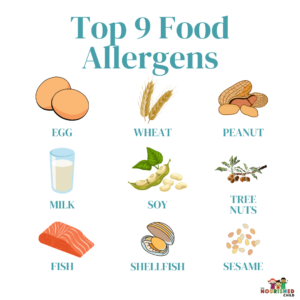Food allergens are proteins present in various foods that can trigger allergic reactions upon consumption, contact, or inhalation. When the immune system encounters these proteins, it mistakenly identifies them as harmful invaders, leading to the production of antibodies. Upon re-exposure to the same allergen, these antibodies bind to it, prompting immune cells to release chemicals that generate allergic symptoms. The severity of reactions can vary widely, ranging from mild discomfort to life-threatening anaphylaxis. The most common food allergens include milk, eggs, fish, shellfish, tree nuts, peanuts, wheat, soybeans, and sesame.
How Food Allergens Trigger Reactions
Food allergens can provoke an adverse immune response even in individuals who have not previously consumed them. An allergic reaction occurs when an allergen enters the body and the immune system fails to recognize it as harmless. This misidentification triggers the release of histamines and other chemicals, which can lead to a range of symptoms, from minor irritation to severe reactions that require immediate medical attention.
During the first exposure to an allergen, the immune system becomes sensitized, allowing it to recognize the allergen in future encounters. Upon re-exposure, the immune system reacts vigorously, causing symptoms that may affect multiple systems within the body.
Health Consequences of Food Allergens
Food allergies can result in both short-term and long-term health consequences.
Short-Term Reactions
- Skin Reactions: Skin irritations, such as hives (urticaria) or eczema (atopic dermatitis), are among the most common immediate responses to food allergens. These conditions can cause significant discomfort and may require medical intervention for relief.
- Digestive Issues: Ingesting an allergen can lead to immediate gastrointestinal symptoms, including stomach pain, nausea, vomiting, or diarrhoea. The severity of these symptoms can vary, with some individuals experiencing intense digestive distress.
- Respiratory Problems: Inhaling allergens can result in respiratory issues, such as coughing, wheezing, or shortness of breath. These symptoms can escalate quickly, particularly in individuals with pre-existing respiratory conditions like asthma.
- Anaphylaxis: This severe and potentially life-threatening reaction can lead to shock, loss of consciousness, or cardiac arrest. Anaphylaxis requires immediate medical intervention, often necessitating the use of epinephrine to counteract the reaction.
Long-Term Health Effects
- Chronic Conditions: Long-term exposure to allergens can lead to chronic health issues, including asthma, recurring sinus infections, and ear infections. Managing these conditions often requires ongoing medical treatment and lifestyle changes.
- Mental Health Impacts: The constant worry of accidental exposure to allergens can contribute to psychological distress, including anxiety and depression. Individuals with food allergies may feel isolated or anxious about social situations involving food.
- Nutritional Deficiencies: Excluding certain foods from the diet to avoid allergens can result in nutritional deficiencies. For example, individuals allergic to dairy may miss essential nutrients like calcium and vitamin D, affecting their bone health over time.
Identifying Common Sources of Food Allergens
Effective allergen management begins with recognizing where food allergens come from. Various sources can contain or increase the risk of food allergens:
- Processed Foods: Many processed foods include additives or flavourings derived from common allergens such as soy, wheat, and dairy. Consumers must read ingredient labels carefully to avoid unexpected allergens.
- Cross-Contamination: In restaurants and food preparation facilities, allergens can inadvertently come into contact with non-allergen foods during preparation. This cross-contact can occur if utensils or surfaces are not thoroughly cleaned after being used for allergen-containing foods, posing a significant risk to individuals with allergies.
- Packaging and Labelling: Allergens may not always be indicated on food labels, or the information provided may be misleading. Consumers need to be vigilant and ask food vendors about potential allergens when dining out.
To manage food allergens effectively, food business operators must:
- Provide clear and accurate allergen information to consumers for both pre-packed and non-pre-packed food and beverages.
- Implement proper handling and management practices for food allergens during food preparation.
- Ensure that staff receive comprehensive training on allergens, including:
- Access to free food allergy training resources.
- An allergen checklist that provides best practices for managing food allergies.
Conclusion
Understanding food allergens is essential for promoting safety in food consumption. By identifying allergen sources and implementing effective management strategies, we can significantly reduce the risks associated with food allergies. Education and training for food handlers and consumers are crucial in fostering a safe dining environment.
As the prevalence of food allergies continues to rise, awareness and proactive measures become increasingly important. By taking these steps, we can protect ourselves and create a more inclusive dining experience for everyone.
 Food Manifest
Food Manifest 



















